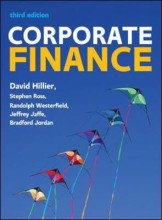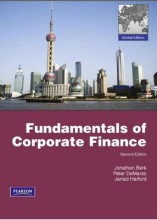Summary: Rekenmaar Samevatting
- This + 400k other summaries
- A unique study and practice tool
- Never study anything twice again
- Get the grades you hope for
- 100% sure, 100% understanding
Read the summary and the most important questions on Rekenmaar Samevatting
-
1 What is accounting?
This is a preview. There are 22 more flashcards available for chapter 1
Show more cards here -
What are the 2 types of accounting?
1. Financial accounting - concerned with the external provision of information for public consumption.
2. Management accounting - concerned with the internal provision of information for the managers within the company. -
What are the 2 most common financial accounting regulations?
1. IFRS - International Financial Reporting Standards
2. GAAP - General Accepted Accounting Principles -
What is the conceptual accounting framework?
A chart that explains the rules of accounting, based on the IFRS principles. -
What are the qualitative characteristics for the CAF?
The characteristics that ensure that the financial statement information is user friendly.
1. Understand ability - using IFRS rules, a financial statement can be understood by everyone
2. Relevance - information should be able to influence decision-making: it needs to have predicting or feedback related value.
3. Reliability - Information is reliable when it is complete, accurate and without mistakes
4. Comparability - reports should be standardised to allow better comparison. -
What are the restrictions within the CAF?
1. Timeliness - information has to be made available in time, to allow users to make a timely decisions
2. Balance between characteristics - they may restrict each other. E.g. comparability vs relevance
3. Revenues vs. costs - financial statements take time and money, management has to evaluate whether or not benefits of information outweigh the investment cost -
What are the 5 elements that form the foundation for financial accounting?
1. Assets - Economic resources which will produce a future economic benefit for the firm, the firm has control over these. It includes machines and stock
2. Liabilities - current obligations a company has towards third parties. It will lead to an outflow of financial resources.
3. Equity - funds of the organisation. When you subtract liabilities from assets.
4. Income - the increase of economic benefits over a certain period.
5. Expenses - the reduction of economic benefits over a certain period of time. -
What are the 2 types of income?
1. Revenue - The result of ordinary business activities
2. Gains - The result of events not covered by regular operations, e.g. proceeds from selling land -
What are the 2 types of expenses?
1. Expenses - The costs that result from general operations
2. Losses - the expenses that do not arise from ordinary activities, e.g. repair costs after a factory fire -
What are the most important financial statements?
1. Statement of financial position (balance sheet)
2. Statement of comprehensive income (income statement/ profit & loss account)
3. Statement of cash flows
4. Statement of changes in equity
5. Notes to the financial statement -
How is the balance sheet ordered?
1. On the left side, the debit side, you have the assets.
2. On the right side, the credit side you have the shareholders' equity and the liabilities.
3. The credit side finances the debit side.
4. Accounts that are least liquid are listed first, so non-current always before current, and cash always last on debit side
- Higher grades + faster learning
- Never study anything twice
- 100% sure, 100% understanding































